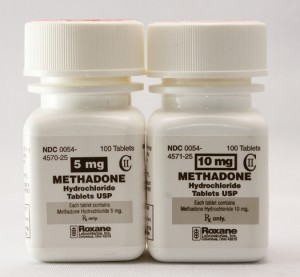 Most people think of methadone in terms of a substitute for heroin in maintenance therapy, but it has also had an important role in the treatment of chronic pain. And unfortunately that’s led to some real problems with respect to abuse and addiction.
Most people think of methadone in terms of a substitute for heroin in maintenance therapy, but it has also had an important role in the treatment of chronic pain. And unfortunately that’s led to some real problems with respect to abuse and addiction.
For the uninitiated, physicians describe pain as acute when it’s possible to point to a specific disease or injury as the cause. Acute pain serves a purpose as a warning system, is related to nervous system activation, and is self-limiting– meaning that as the cause of the pain is eliminated, the pain goes with it.
Chronic pain is usually defined as pain that continues well beyond the expected healing time, serves no biological purpose, and has no identifiable end point. And many experts believe it is more closely related to psychological states than to pathophysiology.
Along with the liberalization of opioid prescribing practices in the early 2000’s, physicians found themselves newly empowered to use methadone for treatment of chronic pain patients. The medication came in pill form and most states went ahead and included it on their preferred drug lists. That reduced expense and made it easier to obtain.
The results were scary. Diversion to abuse has been significant. Currently methadone represents only some two percent of all opioid prescriptions, but it’s been implicated in an astounding one-third of all opioid fatalities– by far the most of any prescribed opioid.
I’m sure methadone is effective in many cases, so I’m not against use of it, but the risks seem formidable. The American Academy of Pain Physicians recently revised their guidelines and are now recommending:
- That physicians carefully select patients before choosing methadone, following a careful assessment and review of medical records, and counsel about the risks and benefits (well, duh, but this apparently hasn’t been the practice).
- Get an ECG before initiating therapy because methadone can provoke cardiac arrhythmias.
- Don’t escalate the dose too rapidly. Try to keep it around 30–40 mg daily. That’s still a lot of methadone. Patients will definitely develop tolerance and physical dependence.
- Institute a schedule of urine drug testing before and during treatment.
- Consider buprenorphine as an alternative. Still an opioid, still dependence-producing, but safer.
I imagine some physicians are already looking around for other options to treat chronic pain. Good for them. There’s an emerging body of research that suggests opioids may not be a good long-term solution anyway.










